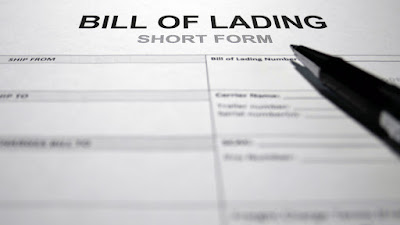A bill of lading (sometimes abbreviated as B/L or BoL) is one of the most important documents in the shipping process. To ship any goods, a bill of lading is required and acts as a receipt and a contract. A completed BOL legally shows that the carrier has received the freight as described and is obligated to deliver that freight in good condition to the consignee. Bill of lading is used for any sea shipment and Airway bill is used for air shipment.
- A description of the goods in general terms not inconsistent with that in the L/C.
- Identifying marks and numbers if any.
- The name of the carrying vessel.
- Evidence that the goods have been loaded on board.
- The ports of shipment and discharge.
- The names of shipper, consignee and name and address of third party if any.
- Whether freight has been paid in advance or is payable at destination.
- The number of original bills of lading issued.
- The date of issue.
- The departure date of carrying vessel.
Different types of Bill of Lading
- Ocean Bill of Lading
- Inland Bill of Lading
- Multimodal/Combined Transport Bill of Lading
- Direct Bill of Lading
- Clean Bill of Lading
- Clean On Board Bill of Lading
- Unclean Bill of Lading/ Claused bill of lading
- Shipped On Board Bill of Lading
- Received Bill of Lading
- Through Bill of Lading
- Stale Bill of Lading
- Straight Bill of Lading
- To Order Bill of Lading
- Trans-shipment bill of lading
- Charter Party Bill of Lading
- House Bill of Lading
- Master Bill of Lading
- Express Release Bill of Lading.

